Michael J. Kramer's Blog, page 28
November 16, 2021
Memory Recalls the Terror & Hope
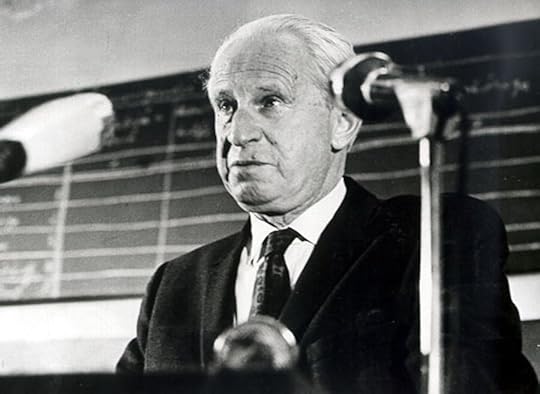
…operational rationality has little use for historical reason. Remembrance of the past may give rise to dangerous insights, and the established society seems to be apprehensive of the subversive contents of memory. Remembrance is a mode of dissociation from the given facts, a mode of ‘mediation’ which breaks, for short moments, the omnipresent power of the given facts. Memory recalls the terror and the hope that passed.
Herbert Marcuse
H/T Pamela M. Lee, Chronophobia: On Time in the Art of the 1960s
November 14, 2021
New Footage of the Berkeley Folk Music Festival
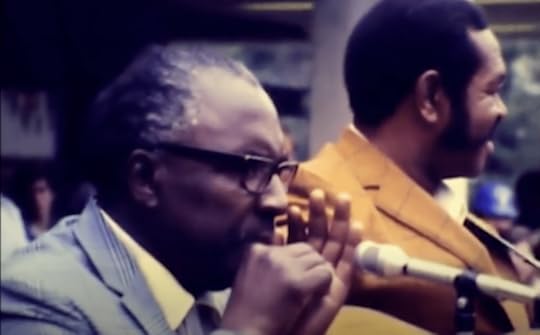
Amazing new TV newsreel footage of the 1969 Berkeley Folk Music Festival from KCRA-TV, uploaded by the Sacramento History Museum. Featuring Charley Marshall, Charles Seeger, Sonny Terry & Brownie McGhee, and Country Joe & the Fish. Reporting by John Martin.
November 10, 2021
2021 November 19—Taking a Virtual Folk Music World Into Virtual Reality
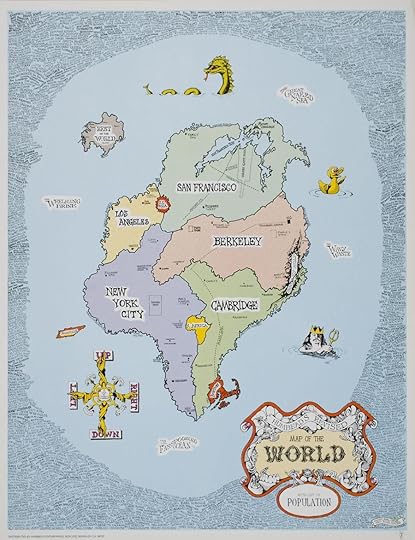 Humbead’s Revised Map of the World, created by Rick Shubb and Early Crabb, 1968, with revisions and reprintings in 1969 and 1970.
Humbead’s Revised Map of the World, created by Rick Shubb and Early Crabb, 1968, with revisions and reprintings in 1969 and 1970.Humbead’s Revised Map of the World reimagines the globe from the perspective of the West Coast folk scene and emerging hippie counterculture. First printed in 1968, with subsequent iterations produced in 1969 and 1970, it was created by Rick Shubb and Earl Crabb, two Bay Area folk music aficionados. Like Saul Steinberg’s famous New Yorker magazine cover View of the World from 9th Avenue, published in 1976, Humbead’s is meant to be a funny artifact that cartographically distorts Euclidean space and Mercator projection in order to suggest a more accurate “mattering map.” It presents a folk pangea in which centers of the folk revival border each other while the “rest of the world” is a tiny island off to the side. Numerous other gags and in-jokes appear on the map. Around its edges, it also contains over 800 names in its “population,” some expected, others quite surprising, some famous, others obscure.
What would it mean to create a “virtual reality” out of this imaginary world that proposes a more accurate perceptual representation of the world from the vantage point of the folk revival? Could virtual reality produce new ways of experiencing the mattering in this “mattering map” for both aficionados and newcomers to the cultural history of the 1960s folk revival? Since it is a map fundamentally shaped and influenced by music, how can virtual reality adopt sound as well as visual data to bring this map more vividly to “life” so that a visitor to this virtual world might enter into it more evocatively? So too, how might virtual reality best handle densities of information such as the 800 names surrounding the map or the many details on the map itself? And how might virtual reality effectively and playfully address the zany humor of the map? Finally, how might a virtual visit to Humbead’s Revised Map of the World manifest itself in various modes of virtual reality: not only an online environment, but also a virtual reality room (with or without headsets) in a museum gallery exhibit?
Early experiments in Google Tilt Brush with Humbead’s Revised Map of the World.In this demonstration at the 6th Annual RIT Frameless Labs XR Symposium on Friday, November 19th, participants can explore the map in Google Tilt Brush. Exploration and potential collaboration by technologists and anyone interested in the project is heartily welcome. Overall, through interdisciplinary interaction and development, the goal of the project is to enter into the map as it gets revised yet again into a virtual reality object through which—and in which—we might better perceive, investigate, and explore the contents and meanings of Humbead’s Revised Map of the World, the 1960s folk music revival, and post-World War II American cultural history as a whole.
More Information about the Revising Humbead’s Revised Map of the World ProjectMore Information about RIT’s Frameless Labs 2021 SymposiumNovember 1, 2021
October 31, 2021
Rovings
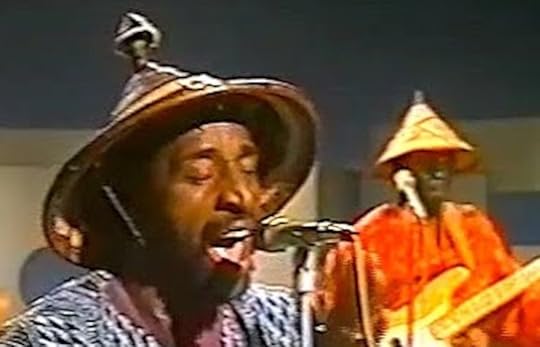 SoundsBonnie “Prince” Billy, Bryce Dessner, and Eighth Blackbird, We Are InhumanBBC 3 Arts and Ideas, “Twilight”Various Artists, FRC 800: A Survey of Traditional Music from the North American TraditionsYusef Lateef, PsychicemotusYusef Lateef, “Robot Man”WordsJohn Le Carré, SilverviewRonald J. Daniels, “Universities Are Shunning Their Responsibility to Democracy,” The Atlantic, 3 October 2021Kim Stanley Robinson, Three Californias Triology, Book 1: The Wild ShoreKeeanga-Yamahtta Taylor, ed., How We Get Free: Black Feminism and the Combahee River CollectiveClaudia Rankine, Citizen: An American LyricGabriel Winant, The Next Shift: The Fall of Industry and the Rise of Health Care in Rust Belt AmericaKate Aronoff, “Let’s Call Joe Manchin and Kyrsten Sinema What They Are: Extremists,” The New Republic, 5 October 2021Viet Thanh Nyugen, The Committed Steven R. Garcia, Bombs Don’t KillAnna Weiner, Uncanny ValleyDaniel Wortel-London, “The Tax Trap,” Dissent, Winter 2021“Walls”
Kon Trubkovich: The Antepenultimate End
, Gagosian Park & 75Jean Alexander Frater: Reform, Aspect/RatioMichael C. McMillen: A Theory of Smoke, LA LouverPhilip Guston, 1969–1979, Hauser & WirthAvery Singer, Reality Ender, Hauser & WirthImagining Landscapes: Paintings by Helen Frankenthaler, 1952–1976, Gagosian Grosvenor Hill, LondonCarmen Winant: The Making and Unmaking of the World, Patron GalleryMelanie Schiff: Blind Spots, Patron GalleryMichael Galinsky, Malls Across AmericaShigeko Kubota: Self-Portrait, Hyundai Card Video Views, MoMAStagesMatt Ulery’s Mannerist 11, Constellation, Friday, 17 September 2021Jennifer Williams and International Contemporary Ensemble, Grounds: A Devised, Environmental Opera Installation Exploring a Feminist History of Brooklyn, Saturday, 9 October 2021Mark Feldman and Jason Roebke Quartet, Elastic Arts Chicago, Thursday, 7 October 2021Tracy Letts: Three Short Plays, Steppenwolf TheaterVietgone, Geva Theater, Wednesday, 13 October 2021Links Lab, Links Hall, Sunday, 24 October 2021Rashid Johnson, The Hikers, Storm King Art CenterScreensThe CourierFoundationBillions, Season 05The Velvet UndergroundNo Time To DieWe Are As Gods: Stewart Brand-Brian Eno Discussion
SoundsBonnie “Prince” Billy, Bryce Dessner, and Eighth Blackbird, We Are InhumanBBC 3 Arts and Ideas, “Twilight”Various Artists, FRC 800: A Survey of Traditional Music from the North American TraditionsYusef Lateef, PsychicemotusYusef Lateef, “Robot Man”WordsJohn Le Carré, SilverviewRonald J. Daniels, “Universities Are Shunning Their Responsibility to Democracy,” The Atlantic, 3 October 2021Kim Stanley Robinson, Three Californias Triology, Book 1: The Wild ShoreKeeanga-Yamahtta Taylor, ed., How We Get Free: Black Feminism and the Combahee River CollectiveClaudia Rankine, Citizen: An American LyricGabriel Winant, The Next Shift: The Fall of Industry and the Rise of Health Care in Rust Belt AmericaKate Aronoff, “Let’s Call Joe Manchin and Kyrsten Sinema What They Are: Extremists,” The New Republic, 5 October 2021Viet Thanh Nyugen, The Committed Steven R. Garcia, Bombs Don’t KillAnna Weiner, Uncanny ValleyDaniel Wortel-London, “The Tax Trap,” Dissent, Winter 2021“Walls”
Kon Trubkovich: The Antepenultimate End
, Gagosian Park & 75Jean Alexander Frater: Reform, Aspect/RatioMichael C. McMillen: A Theory of Smoke, LA LouverPhilip Guston, 1969–1979, Hauser & WirthAvery Singer, Reality Ender, Hauser & WirthImagining Landscapes: Paintings by Helen Frankenthaler, 1952–1976, Gagosian Grosvenor Hill, LondonCarmen Winant: The Making and Unmaking of the World, Patron GalleryMelanie Schiff: Blind Spots, Patron GalleryMichael Galinsky, Malls Across AmericaShigeko Kubota: Self-Portrait, Hyundai Card Video Views, MoMAStagesMatt Ulery’s Mannerist 11, Constellation, Friday, 17 September 2021Jennifer Williams and International Contemporary Ensemble, Grounds: A Devised, Environmental Opera Installation Exploring a Feminist History of Brooklyn, Saturday, 9 October 2021Mark Feldman and Jason Roebke Quartet, Elastic Arts Chicago, Thursday, 7 October 2021Tracy Letts: Three Short Plays, Steppenwolf TheaterVietgone, Geva Theater, Wednesday, 13 October 2021Links Lab, Links Hall, Sunday, 24 October 2021Rashid Johnson, The Hikers, Storm King Art CenterScreensThe CourierFoundationBillions, Season 05The Velvet UndergroundNo Time To DieWe Are As Gods: Stewart Brand-Brian Eno Discussion
October 24, 2021
The Gap Band
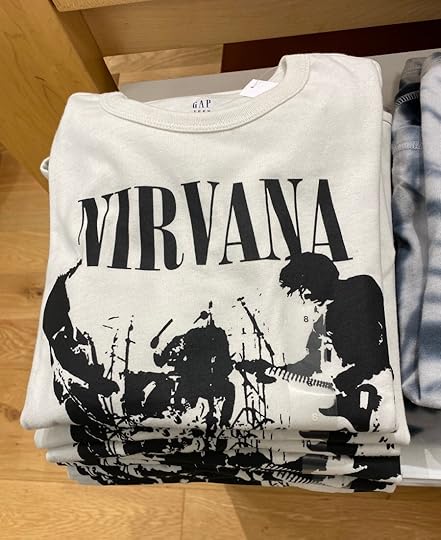
Seen at the Gap store at the mall. Nirvana returns to the teen culture from which it emerged, just the trace of a message on a mass-produced t-shirt, something about how corporations still suck.
Digital Tower
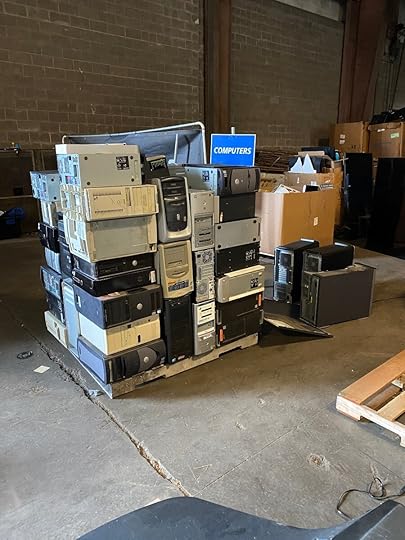
Horse Sense
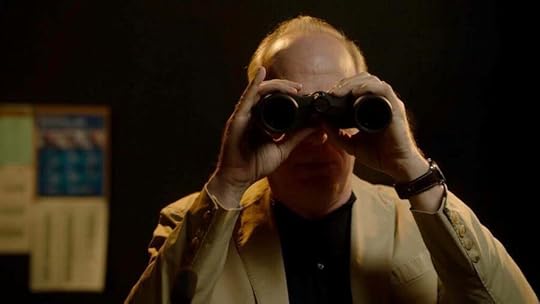 Tracy Letts in The Stretch. Photo: Anna D. Shapiro.
Tracy Letts in The Stretch. Photo: Anna D. Shapiro.In Tracy Letts’ The Stretch, the actor performs a monologue in the role of a horserace announcer. Written by Letts and screened online as part of Steppenwolf’s “Three short plays by Tracy Letts” digital program, the play is just fifteen minutes long, but it is more than enough time to work its magic. Letts begins in a comical mode, announcing funny horse names such as “My Enormous Ego,” but the horses and the soliloquy itself soon go right past the photo finish into more existential territory. Letts’ face and voice take on great and greater depths—more frazzled, more pained, more confessional—as he meditates not only on horses, but on the mysteries of life.
I once watched Letts almost ruin a Steppenwolf production of Edward Albee’s Who’s Afraid of Virginia Woolf? by blowing the other actors off the stage in what is a quintessential ensemble work, so monologue perhaps better suits his style. By the last stretch of this mesmerizing short online play, it’s as if Letts’ race has only just begun and one wants to listen more, maybe until the end of time.
October 14, 2021
Talkin’ Berkeley Folk Music Festival
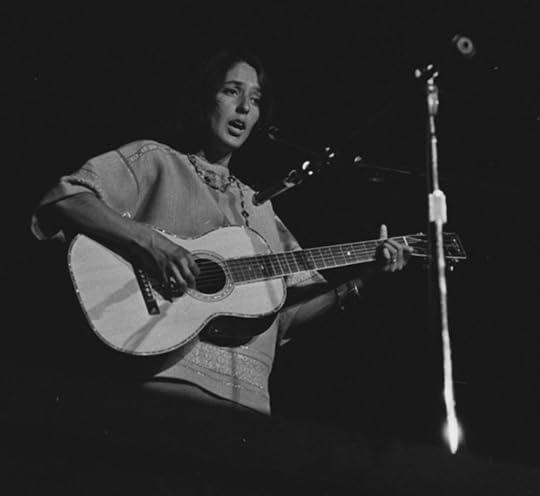
Reflections on The Berkeley Folk Music Festival & the Folk Revival on the US West Coast—An Introduction in Stephanie Kulke, “Explore the 1960’s Berkeley Folk Music Festival through the Libraries’ new exhibit,” Northwestern Now, 22 September 2021.




